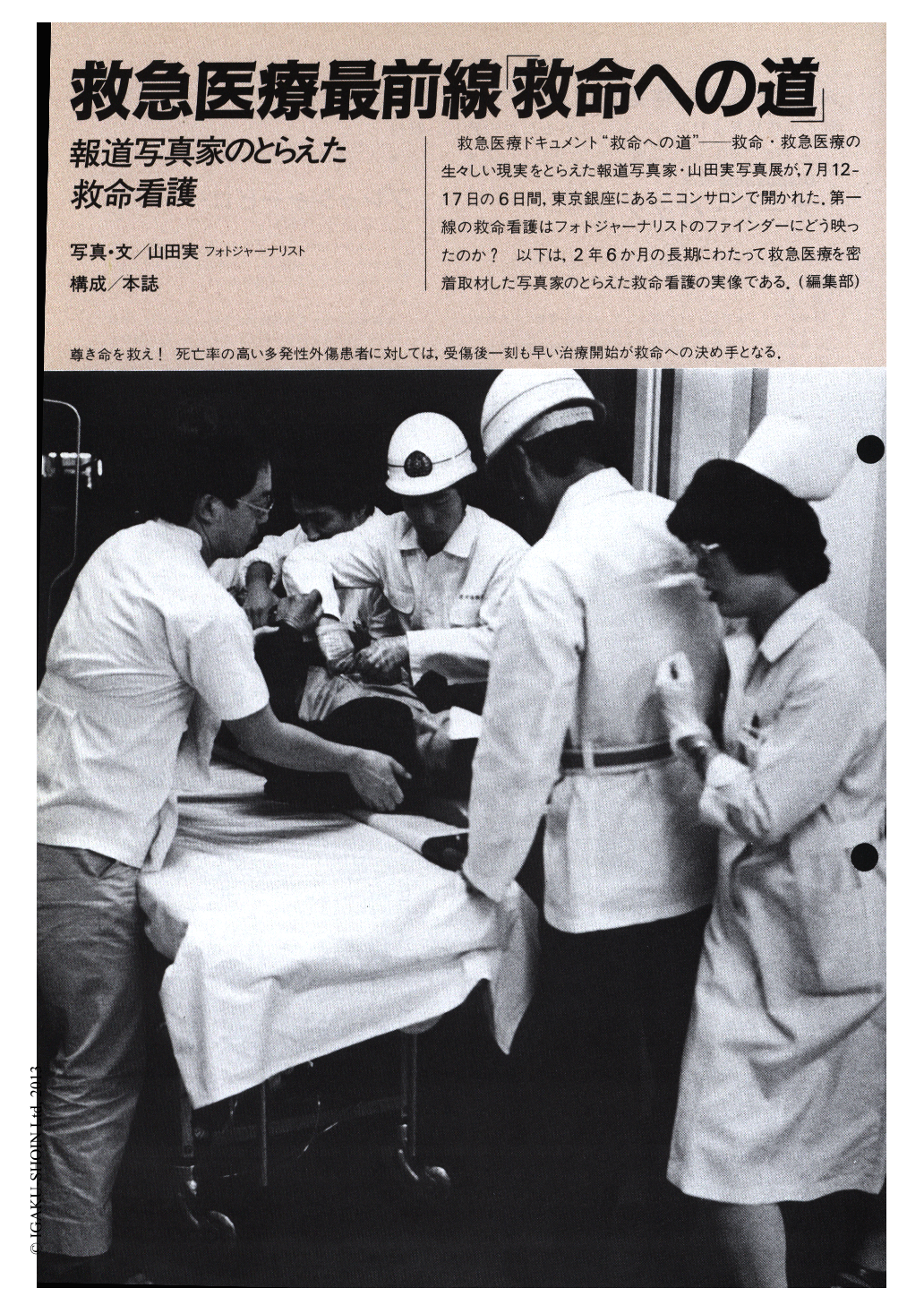- 著者
- 白井 智士 山田 寛喜 山口 芳雄
- 出版者
- 電子情報通信学会
- 雑誌
- 電子情報通信学会総合大会講演論文集.通信(1) = 電子情報通信学会総合大会講演論文集.通信(1) (ISSN:13491369)
- 巻号頁・発行日
- no.2013, pp.201, 2013-03
1 0 0 0 生きている漁具の化石 : 沖縄宮古群島におけるkakiの研究
- 著者
- 西村 朝日太郎
- 出版者
- 日本文化人類学会
- 雑誌
- 民族學研究 (ISSN:00215023)
- 巻号頁・発行日
- vol.44, no.3, pp.223-259, 1979
While researching the aquatic cultures along the coast of the Ariake Sea, the author's attention was drawn to two cultural traits in the realm of overt fishermen's culture. One is the mud sled, widely distributed along the muddy tidal zones throughout the world. The other is the stone tidal weir, built along reef coasts with conspicuous tidal ranges. The former is a leading cultural trait which represents the muddy tidal flat culture, and the latter, the reef culture. The latter in particular is quite archaic and presumably originated in the pre-sapiens phase of human history as pointed out by J. Desmond CLARK, although this is denied by R. A. DART. This paper deals with the stone tidal weirs and their relics found along the coast of Miyako Island and the adjacent Irabu Island. In 1957 the author set out to investigate a vast range of gigantic construction on the reef flat along the coast of Karimata in Miyako Island. The range comprised a fixed fishing gear known as a stone tidal weir. Stone tidal weirs at Karimata are mamma-shaped, while others, which are widely scattered in the area, including Iriomote, Kohama, Irabu. Ishigaki etc., vary in shape. Subsequent to several field researches on stone tidal weirs (called kaki or katsi etc. by the natives) in this region, the author sent several of his assistants there in 1972 with the aim of conducting an intensive investigation of the stone tidal weirs still in existence on those islands. This report brings out the results of our joint research, particularly on Miyako and Irabu Islands. A report will be presented later concerning the stone tidal weirs on Kohama Island. Stone tidal weirs, archaic primitive fixed fishing gear, have been under considerable oceanoographical influence due to their particular characteristics in location and function. The author describes in brief the oceanographic factors which have close relationships to stone tidal weirs. Along the northeatern coast of Miyako Island there were originally sixteen stone tidal weirs (photographically illustrated : fig. 5) but most of them were destroyed by the big typhoon named Sarah in 1959 and the subsequent Chilian tsunami (tidal waves caused by an earthquake) in 1960. As mentioned above, stone tidal weirs at Karimata, like those in other areas, are of ancient origin. A considerable number of poems referring to stone tidal weirs seem to be involved in "omorososhi", the oldest anthology of Okinawa. Genhichi SHIMABUKURO has pointed out several poems related to it, however, referring to the works of S. HOKAMA and K. TORIKOSHI, there is ample room for doubt. The author believes that an ancient poem handed down from one generation to another at Karimata, which is entitled "Upuja mabikirja nu fusa" is related to the stone tidal weir. This poem is found in the book "Alethology of Miyako Island" written by S. HOKAMA and K. SHINZATO. Stone tidal weirs of Okinawa can be classified into four types as far as the catching part is concerned, as indicated in figure 13. Type A is akin to a stone weir with its fishing method differentiated in principle from a stone tidal weir. This is the type which formerly existed in Henza Island. Type B is found at Karimata, and it consists of three parts : a) a 10w stone wall (kaki-nu-ti :) as long as 780m with mutu-gaki, b) a catching part (Bu-fuga) , and c) a flat stone-block seat (bi : si) set on both sides of the catching chamber. During ebbtide, water dashes into the catching chamber at the speed of 3/5 m/s on the water surface.
1 0 0 0 漁具の生ける化石 石干見の法的諸関係
- 著者
- 西村 朝日太郎
- 出版者
- 早稲田大学
- 雑誌
- 比較法学 (ISSN:04408055)
- 巻号頁・発行日
- vol.5, no.1, pp.73-116,図1枚, 1969-04
- 著者
- 西山 豊
- 雑誌
- 大阪経大論集 (ISSN:04747909)
- 巻号頁・発行日
- vol.54, no.4, pp.153-173, 2003-11-15
1 0 0 0 OA 魯迅と左翼作家連盟
- 著者
- 小山 三郎
- 出版者
- 一般財団法人 アジア政経学会
- 雑誌
- アジア研究 (ISSN:00449237)
- 巻号頁・発行日
- vol.33, no.3.4, pp.18-49, 1987 (Released:2014-09-15)
1 0 0 0 主軸回転同期撮像による工具の振れ測定
- 著者
- 竹保 義博 佐々木 秀和 山本 健 西川 隆敏 筒本 隆博
- 出版者
- 公益社団法人 精密工学会
- 雑誌
- 精密工学会学術講演会講演論文集
- 巻号頁・発行日
- vol.2014, pp.211-212, 2014
本研究は,撮像式の機上工具測定システムによる振れ測定方法を提案する。使用するシステムは,主軸エンコーダのZ相信号を利用した回転同期高速シャッター方式を採用する。この測定のために,三分探索を応用した切れ刃位置の探索方法を考案した。この振れ測定方法は,工具の取り付け角度に特段の注意を払う必要がなく,測定時間が5秒以下と短いため実用的である。
- 著者
- 木嶋 祥麿 小沢 潔 桜井 俊一朗 仲山 勲 東海林 隆男 笹岡 拓雄
- 出版者
- 一般社団法人 日本内科学会
- 雑誌
- 日本内科学会雑誌 (ISSN:00215384)
- 巻号頁・発行日
- vol.73, no.7, pp.986-994, 1984
ビタミンKが欠乏すると,肝での血液凝固因子の活性化が阻害されるため出血症状が出てくるが,臨床的には新生児にしばしばみられる.成人においてはまれであるが,最近とくに乳児期にみられるビタミンK欠乏症が注目されている.一方,腎不全患者ではしばしば皮下や消化管などに出血がみられ,血小板機能・凝固困子活性の異常などが指摘されている.しかしビタミンK欠乏症の併発はあまり知られていない.最近われわれが経験した出血ないし凝固異常を呈した患者14例を検討したところ,慢性腎不全8例,急性腎不全(手術後4例,激症型皮膚筋炎・脳出血後感染症合併それぞれ1例)6例であり,このうち4例は検査結果から消耗性血管内凝固症候群(DIC)であつた.ほかの10例では肝機能異常はなく, DICの所見とも異つており,プロトロンビン時間・部分トロンボプラスチン時間の延長,第II, VII, IX, X因子活性の低下,異常な第II因子分子の出現などの所見が認められ,ビタミンK投与で改善を認めたことからビタミンK欠乏症と診断した.本症10例の臨床所見は高令の女性患者が多く,食事摂取は著しく不良で,重症感染症および手術後のため抗生物質が投与されており, DICの背景因子と共通点が多い.このような悪条件をもつ腎不全患者ではビタミンKが枯渇しやすいと考えられるので,非経口的に予防投与しておく必要がある.
1 0 0 0 救急医療最前線「救命への道」—報道写真家のとらえた救命看護
1 0 0 0 IR 加藤幸信「北炭真谷地炭鉱の友子制度と軌跡」 北海道炭鉱汽船㈱百年史編纂(五)
- 著者
- 大場 四千男 OHBA Yoshio
- 出版者
- 北海学園大学開発研究所
- 雑誌
- 開発論集 (ISSN:0288089X)
- 巻号頁・発行日
- no.89, pp.141-189, 2012-03-15
1 0 0 0 IR 大国主伝承の一考察
- 著者
- 岩下 均
- 雑誌
- 目白大学人文学研究 = Mejiro journal of humanities (ISSN:13495186)
- 巻号頁・発行日
- no.12, pp.1-19, 2016
1 0 0 0 IR 諏訪社の祭祀と仮屋
- 著者
- 森 隆男
- 出版者
- 近畿民俗学会
- 雑誌
- 近畿民俗 (ISSN:02882183)
- 巻号頁・発行日
- no.154, pp.1-16, 1999-02-25
1 0 0 0 OA 大国主伝承の一考察
- 著者
- 岩下 均
- 雑誌
- 目白大学人文学研究 = Mejiro journal of humanities (ISSN:13495186)
- 巻号頁・発行日
- vol.(12), pp.1-19, 2016
1 0 0 0 OA 諏訪社の祭祀と仮屋
- 著者
- 森 隆男
- 出版者
- 近畿民俗学会
- 雑誌
- 近畿民俗 (ISSN:02882183)
- 巻号頁・発行日
- vol.154, pp.1-16, 1999-02-25
1 0 0 0 公開国際シンポジウム報告「フジツボ類の繁殖生物学」
1 0 0 0 死刑賛成弁護士
- 著者
- 犯罪被害者支援弁護士フォーラム著
- 出版者
- 文藝春秋
- 巻号頁・発行日
- 2020
1 0 0 0 鎮魂歌 (レクイエム)
1 0 0 0 いつかの夏 : 名古屋闇サイト殺人事件
1 0 0 0 娘を奪われたあの日から : 名古屋闇サイト殺人事件・遺族の12年
- 著者
- NHK「事件の涙」取材班著
- 出版者
- 新潮社
- 巻号頁・発行日
- 2020





